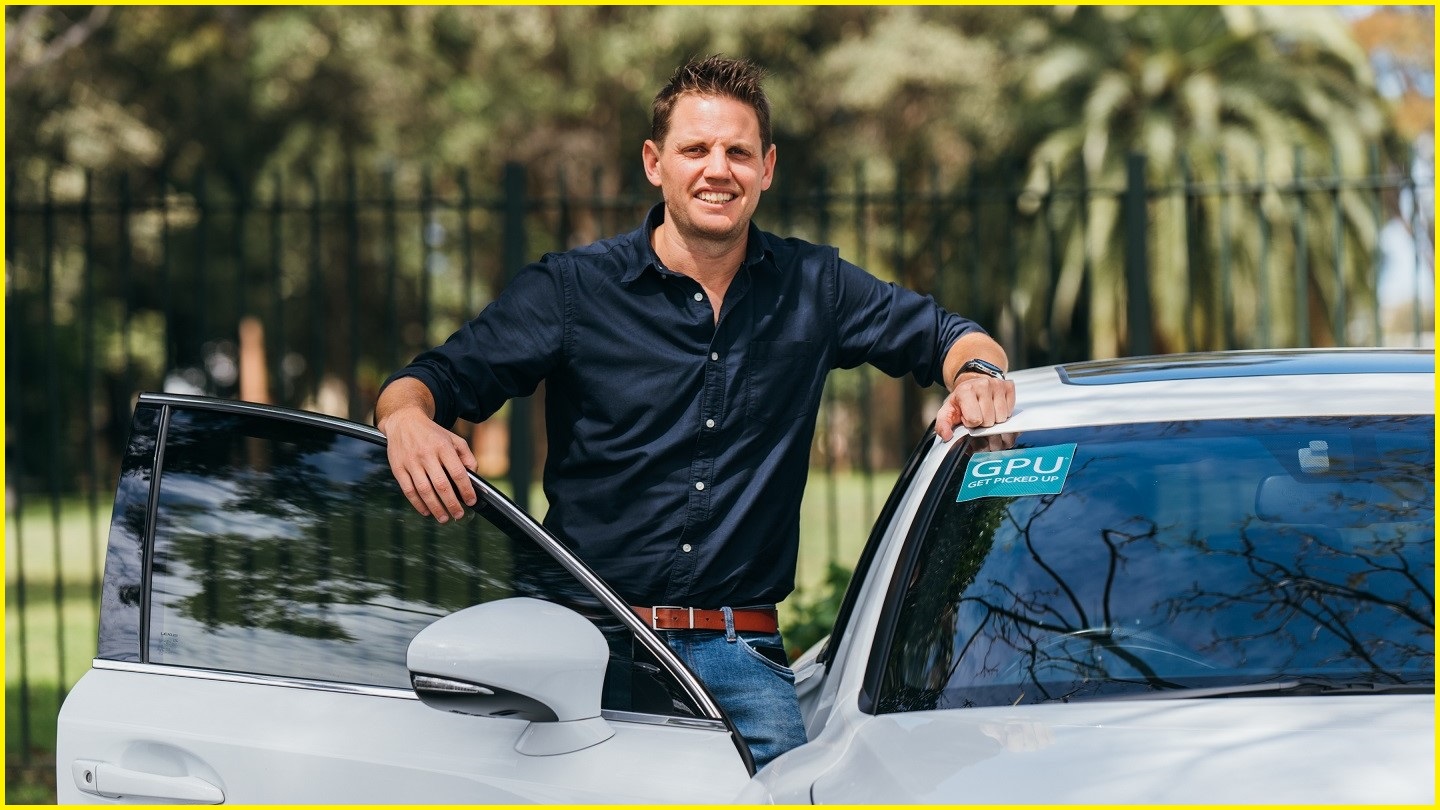Australian ridesharing start-up Get Picked Up is continuing to take the fight to Uber, with the launch of a new green offering and a rapid period of growth.
Get Picked Up is the biggest local player in the ridesharing market after it was launched by Daniel Rombouts in 2011 as a side hustle, just before Uber expanded to Australia.
But while Uber has seemingly unlimited money and dominates the market, Get Picked Up has carved out a niche for itself, enjoying 700 per cent growth over the last four years and now turning over $6.5 million annually, Rombouts said.
Get Picked Up is mostly used by corporates for airport transfers, corporate transfers and agent transfers, and is striving to innovate to stay ahead in the increasingly crowded market.
Now users of the service in Sydney, Melbourne and Brisbane will have the chance to book a Tesla vehicle when pre-booking a ride, with Get Picked Up acquiring its own fleet of the electric cars to rent out to its drivers.
“We’re always looking for an edge, to provide customers with an additional reason to book us - to pre-book and plan their journey versus using another ridesharing service like Uber or DiDi,” Rombouts told Information Age.
“We’re at a point where we have quite a lot of volume going through the business at the moment so we decided to expand by buying a company fleet of new Tesla vehicles. A lot of people are interested in the green aspect and there’s a tendency towards that now particularly with the large corporates we service.
“We want to be at the forefront of the industry in that manner to make sure we’re moving with our clients.”
The eco-friendly option will be available to users at approximately the same cost as Uber’s premium offering, Rombouts said.
A number of global ridesharing giants, including India’s Ola and China’s DiDi, have now joined Uber in Australia, regularly offering discounts to try to entice users to their platforms.
But Rombouts said there are better ways of nurturing loyalty in ridesharing users.
“Competing is providing customer value - there are ways of doing that without just throwing discounts to people,” he said. “What we’re doing is focusing on building value and brand loyalty. Despite Uber, DiDi and Ola having lots of money, with the discounts people just jump from one provider to another.
“Yes, they have money but lots of companies out there have money; it’s more about whether you innovate and whether you stay leading the market and keeping clients engaged and providing a better service. I think we’re doing that.”
When Rombouts began working on the idea for Get Picked Up in 2011, his team started to build separate apps for drivers and users. With separate apps needed for Blackberry, Android and iOS devices, they were looking at six different apps in total.
But as with any early-stage startups, there were many pivots along the way, and Rombouts soon realised this wasn't the most efficient way to be building his company.
“When you’re building apps, they’re communicating back and forth with the server, and as a start-up we had to pivot so much to find a really good market fit,” he said.
The original idea was for a platform where a user could request an immediate ride and then receive discretionary quotes from drivers. But with the high capital costs needed to launch a company like this, he decided to take a different approach.
“We pivoted towards the pre-booking side of things, and from a technology point of view we focused on the API booking functionality,” Rombouts said.
The web platform had a plugin with Serko, a major travel booking platform, and the service began to attract corporate clients. Now, more than eight years later, the company has returned attention to its apps, which are set to launch this week.
“Because of the amount of changes and costs of doing updates on the fly as you’re changing and pivoting to find product-market fit, delivering a quality product becomes so difficult, so we focused on the core of the server and the website, and building that out to make sure what we’re doing is useful,” Rombouts said.
It’s important to build a start-up lean and constantly be testing to see what the market actually wants, he added.
“I used to be a lot more focused on going full throttle at things, whereas now I’m more conscious of dipping a toe in the water and checking that you’re going to get traction, and that the ideas are going to be popular and the demand is going to be on the other side of the tech expenditure,” he said.
“If it doesn’t then you’ve used a lot of time and effort to build a redundant system.”
After zeroing in on the corporate market, the Get Picked Up team worked closely with its regular customers to make sure it was building a product that was wanted.
“We were lucky because we had a lot of early customers that engaged with us and were open to chatting to us about our system,” Rombouts said.










